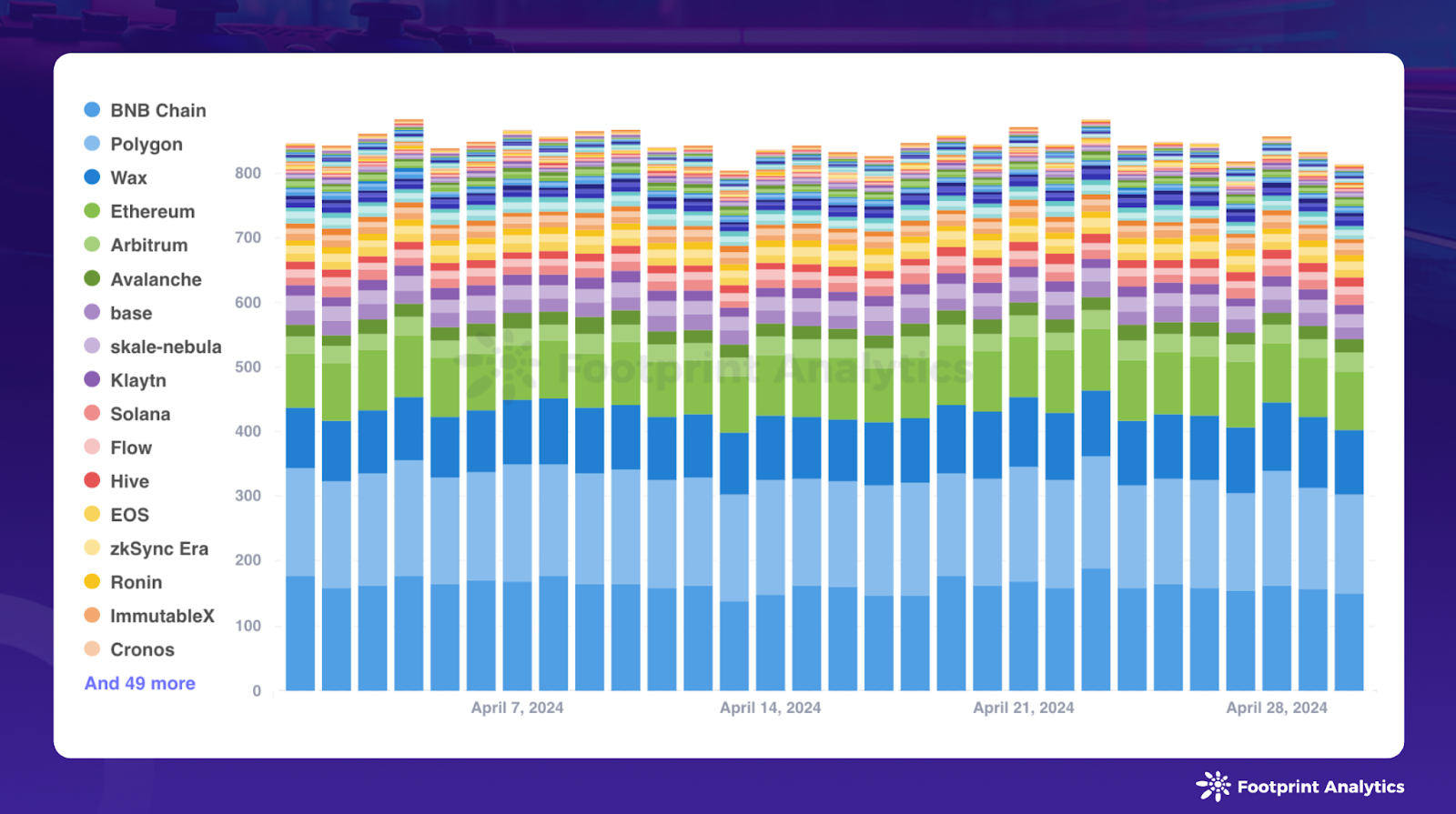Accessibility In Gaming: A Casualty Of Industry Downturns

Table of Contents
The Cost of Accessibility Features in Game Development
Implementing robust accessibility features significantly increases the cost of game development. Creating customizable controller options, comprehensive subtitle systems with multiple language support, adaptive controls for players with motor impairments, and colorblind modes demands substantial investment. This includes not only the financial cost but also the expenditure of time and resources. These costs are often viewed as "extra" expenses, particularly when studios face budgetary constraints. During economic downturns, such "non-essential" features are frequently the first to be cut.
- Increased development time: Designing and implementing accessibility features requires dedicated time and effort from developers.
- Need for specialized programmers and testers: Accessibility often requires specialists familiar with assistive technologies and the needs of diverse players with disabilities.
- Potential for increased QA testing: Thorough testing is vital to ensure the effectiveness and reliability of accessibility features across different platforms and assistive technologies.
- Ongoing maintenance and updates: Accessibility features, like any other aspect of a game, require ongoing maintenance and updates to address bugs and accommodate evolving technologies.
Prioritization of Core Gameplay Features Over Accessibility
Budget cuts frequently lead to a prioritization of core gameplay mechanics and visual fidelity over accessibility features. This is a regrettable but common practice. Resources are diverted to enhancing graphics, improving AI, and polishing core gameplay loops, leaving accessibility improvements to the wayside, or relegated to future updates (which may never materialize). The ethical implications of this prioritization are significant; it essentially excludes a large and underserved portion of potential players.
- Limited resources allocated to accessibility features: Accessibility often receives a minimal budget, hindering the scope and quality of implemented features.
- Delay or cancellation of accessibility features: Planned accessibility features are often delayed indefinitely or canceled outright due to budget constraints.
- Reduced quality of existing accessibility options: Existing accessibility options may be poorly implemented or lack adequate support due to resource limitations.
- Lack of testing for accessibility features: Insufficient testing can lead to poorly functioning or even counter-productive accessibility options.
The Impact of Outsourcing and Budget Constraints
Outsourcing game development, a common cost-cutting measure, can further exacerbate the issue of accessibility. Communication barriers between the development team and outsourced studios can hinder the accurate conveyance of accessibility requirements. Furthermore, outsourced teams may lack the specialized expertise necessary for effective implementation of sophisticated accessibility features.
- Communication challenges in conveying accessibility requirements: Misunderstandings and misinterpretations can occur during the communication process, potentially resulting in poorly implemented accessibility features.
- Lower standards in quality control for accessibility features: Outsourced teams may not adhere to the same quality standards for accessibility features as the core development team.
- Increased difficulty in implementing complex accessibility solutions: Complex accessibility solutions may be beyond the capabilities or experience of an outsourced team.
The Long-Term Consequences of Neglecting Accessibility in Gaming
Neglecting accessibility in gaming carries substantial long-term consequences. It results in the exclusion of a significant market segment—disabled gamers—leading to potential revenue loss and negative brand image. Furthermore, such exclusion can have legal ramifications, particularly in regions with legislation like the Americans with Disabilities Act (ADA) in the US, which mandates reasonable accommodations for people with disabilities.
- Loss of revenue from excluded players: Failing to cater to disabled gamers represents a significant loss of potential revenue.
- Negative brand image and reputational damage: Excluding a large segment of players can damage a game's reputation and brand perception.
- Potential legal challenges and lawsuits: Non-compliance with accessibility regulations can result in costly legal battles and fines.
- Decreased overall game quality and player satisfaction: A game lacking accessibility options will inevitably be less enjoyable and inclusive for many players, leading to decreased overall satisfaction.
Strategies for Maintaining Accessibility During Economic Downturns
Maintaining accessibility during economic downturns requires a strategic approach. While substantial investment is ideal, prioritizing essential accessibility features, leveraging open-source tools, and actively engaging the community for feedback can significantly mitigate the impact of budget constraints.
- Prioritize core accessibility features: Focus on implementing essential features like subtitles, colorblind modes, and customizable controls first.
- Collaborate with accessibility experts and disability advocates: Seek input and guidance from accessibility experts to ensure effective implementation of features.
- Utilize readily available accessibility tools and libraries: Leverage existing tools and libraries to reduce development time and costs.
- Engage the community for feedback and testing: Involve players with disabilities in the testing process to identify and address any accessibility issues.
The Future of Accessibility in Gaming
Ignoring accessibility in gaming is not merely an ethical lapse; it's a missed business opportunity. The long-term consequences—financial, ethical, and legal—clearly outweigh any short-term cost-saving measures. The future of gaming must be inclusive. Invest in accessibility in gaming; improve accessibility in your game development; embrace inclusive gaming practices; make accessibility in gaming a priority. By prioritizing accessibility, game developers can create more engaging and inclusive experiences for all players, fostering a more diverse and thriving gaming community. For more information on inclusive game design, explore resources like [link to relevant resource].

Featured Posts
-
 Find The Best Memorial Day Sales And Deals Of 2025
May 23, 2025
Find The Best Memorial Day Sales And Deals Of 2025
May 23, 2025 -
 Resultados Del Sorteo 23 Entradas Dobles Para El Partido Cb Gran Canaria Unicaja
May 23, 2025
Resultados Del Sorteo 23 Entradas Dobles Para El Partido Cb Gran Canaria Unicaja
May 23, 2025 -
 5 The Foxs Big Rig Rock Report 3 12 Key Highlights And Insights
May 23, 2025
5 The Foxs Big Rig Rock Report 3 12 Key Highlights And Insights
May 23, 2025 -
 Facing Eighty The Whos Honest Look At Rock Star Life
May 23, 2025
Facing Eighty The Whos Honest Look At Rock Star Life
May 23, 2025 -
 Rybakina Falls To Andreescu In Straight Sets At Italian Open
May 23, 2025
Rybakina Falls To Andreescu In Straight Sets At Italian Open
May 23, 2025
Latest Posts
-
 Porsche Cayenne Gts Coupe Moja Opinia Po Jazdach Probowych
May 24, 2025
Porsche Cayenne Gts Coupe Moja Opinia Po Jazdach Probowych
May 24, 2025 -
 Pabrik Zuffenhausen Pusat Kelahiran Porsche 356
May 24, 2025
Pabrik Zuffenhausen Pusat Kelahiran Porsche 356
May 24, 2025 -
 Mengungkap Sejarah Porsche 356 Di Zuffenhausen Jerman
May 24, 2025
Mengungkap Sejarah Porsche 356 Di Zuffenhausen Jerman
May 24, 2025 -
 Porsche 356 Dan Pabrik Zuffenhausen Sejarah Dan Warisan
May 24, 2025
Porsche 356 Dan Pabrik Zuffenhausen Sejarah Dan Warisan
May 24, 2025 -
 Jejak Porsche 356 Dari Zuffenhausen Jerman Menuju Legenda
May 24, 2025
Jejak Porsche 356 Dari Zuffenhausen Jerman Menuju Legenda
May 24, 2025
